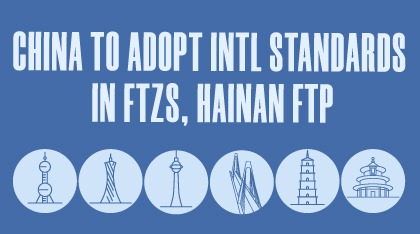Santen Pharmaceutical Co Ltd, a Japanese firm specializing in ophthalmology products, said it plans to address a growing demand for eye care goods in China, especially given the country's aging demographic trends.
The Osaka-based company completed construction of its new factory, Santen Vision Park, in Suzhou, Jiangsu province, earlier this month. For Santen, after Japan, China stands as one of the largest overseas markets globally in terms of business size and operational size.
The new highly automated factory located in Suzhou Industrial Park will complement its existing facility in the city.
In addition to meeting the rising demand in China for prescription ophthalmic solutions, it will also help reinforce the company's production and supply structure in the country, Santen said.
"With the completion of Santen Vision Park, we are confident that we will be able to contribute even more to the eye health of Chinese people in the future," said Takeshi Ito, president and CEO of Santen.
With construction completed in three years, the new plant is expected to see production capacity exceed 800 million bottles of eye drops annually in the first phase. The factory is scheduled to be put into operation by 2027, following commissioning alongside required qualification and certification phases, and will significantly boost Santen's manufacturing capacity.
A smart facility, the new plant will feature an integrated platform for real-time visualized data, and logistics will be supported by automated guided vehicles and rail-guided vehicles. It aims to secure sufficient production capacity for innovative new production and established supply chains in the Chinese market.
"Most of the products we sell in China are prescription medicines, and many provide solutions for issues like glaucoma and dry eyes," said Mark Dawson, chief product supply officer at Santen.
"Santen Vision Park will ensure that we have capacity to meet the growing and diverse needs of Chinese patients, and contribute to eye health in China," Dawson said.
China is becoming an older society with a large and growing population of seniors. By the end of last year, people aged 60 and above reached 296.97 million in number, or 21.1 percent of the total population, said the National Bureau of Statistics.
In addition, 216.76 million people were aged 65 and above, accounting for 15.4 percent of the nation's population. When the number of those 65 and older reaches 14 percent of the total population, this indicates that the country has become a deeply aging society, the NBS said.
It is estimated that more than 200 million seniors suffer from presbyopia and cataracts. Among the elderly aged between 60 and 89, the incidence of cataracts is about 80 percent in China, said the Chinese Ophthalmological Society.
Entering the China market in 1988, Santen is also working on the development of a treatment for slowing the progress of myopia — or nearsightedness. The company hopes that its efforts will play a part in resolving this issue in China, and it would like to better serve the Chinese people and contribute to the Healthy China 2030 initiative.
For global eye treatment products using hyaluronic acid, an important component of artificial tears, Santen is a major player in the sector. Other major industry players include Japan's Senju Pharmaceutical Co Ltd, Germany's Albomed GmbH, US-based Bausch Lomb and South Korea's LG Life Sciences Ltd, said LeadLeo Research Institute, a market research provider.
Sales of eye treatment products using hyaluronic acid reached 2.32 billion yuan ($320 million) in China in 2021. Between 2017 and 2021, the compound annual growth rate of the market was 11.8 percent. By 2026, sales are expected to hit 3.39 billion yuan, LeadLeo found.






